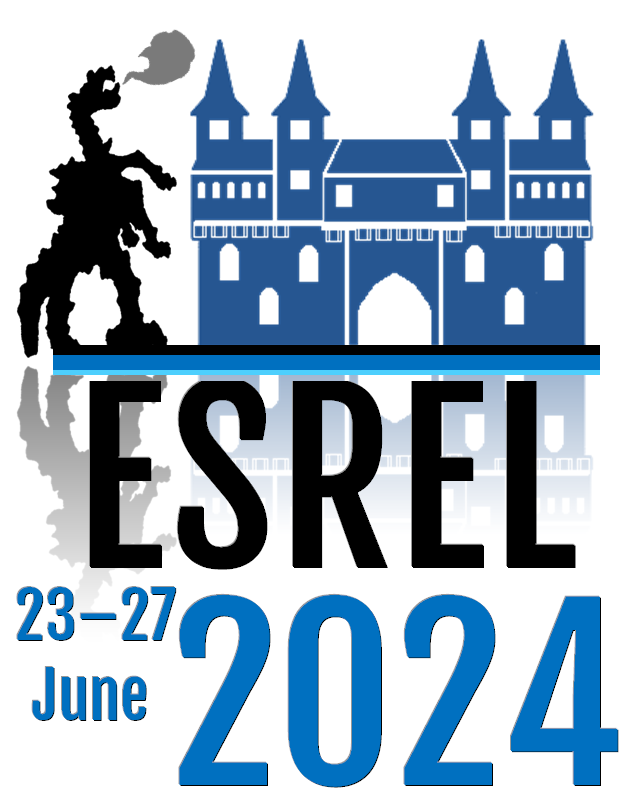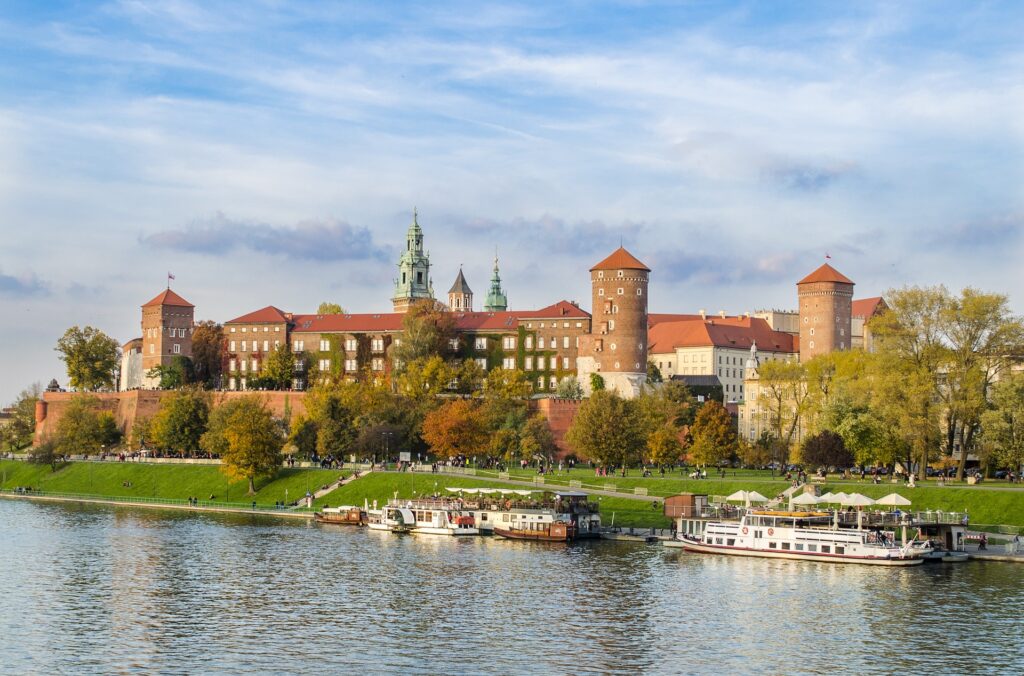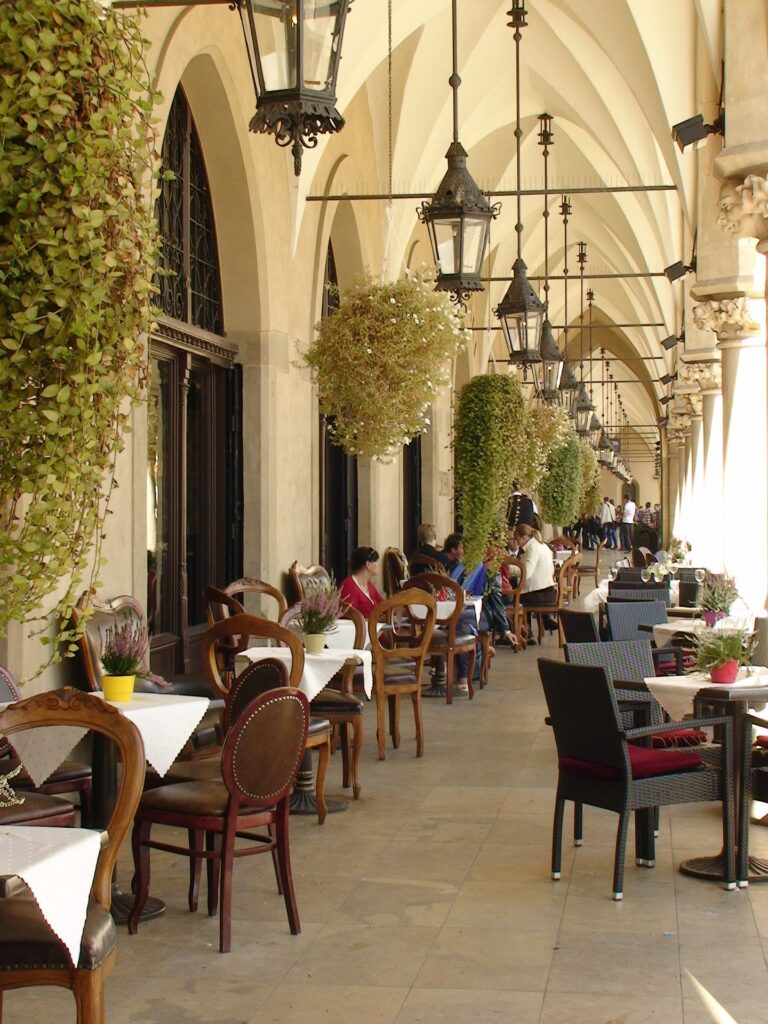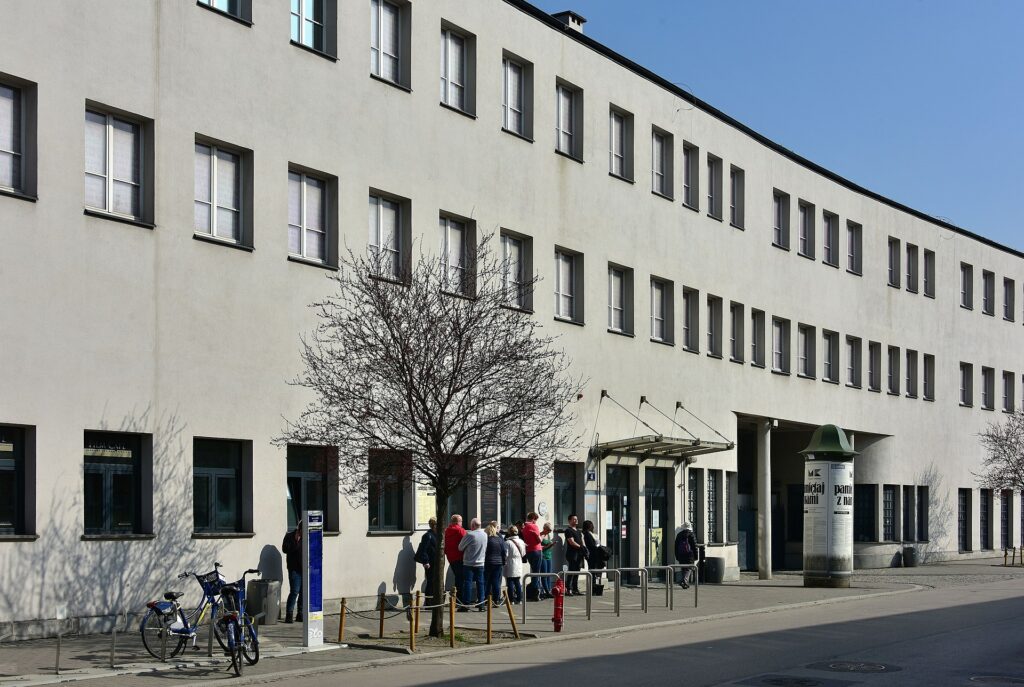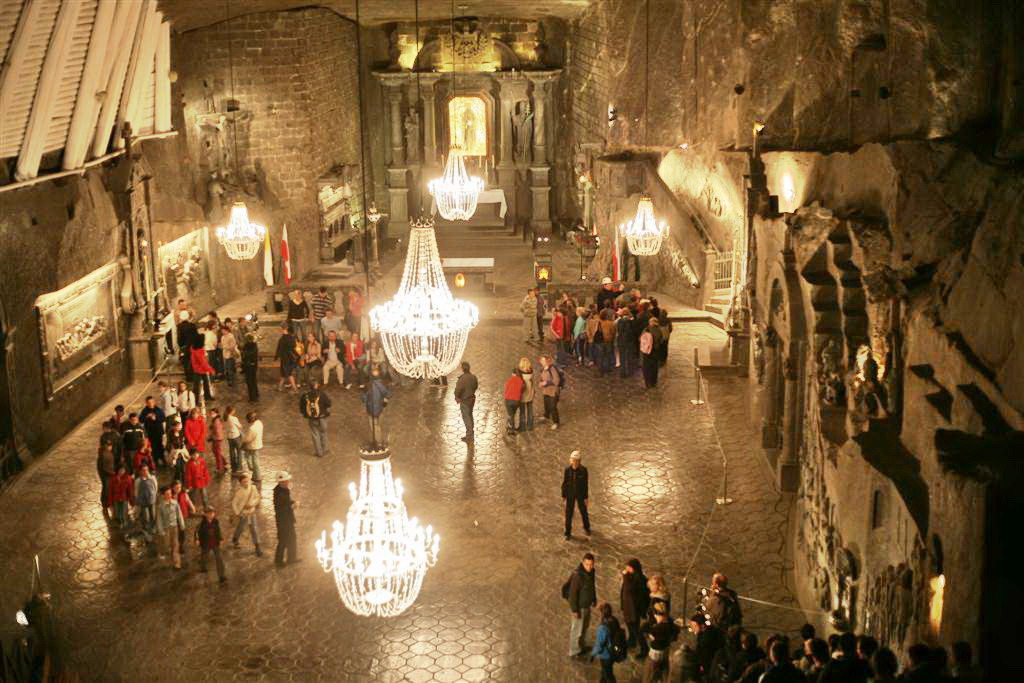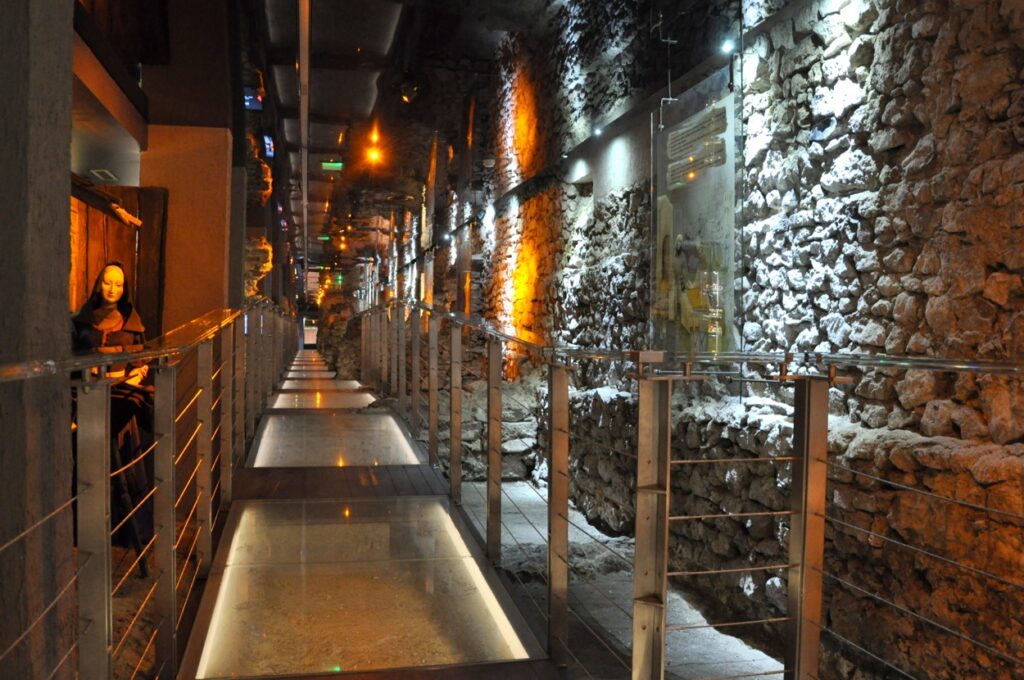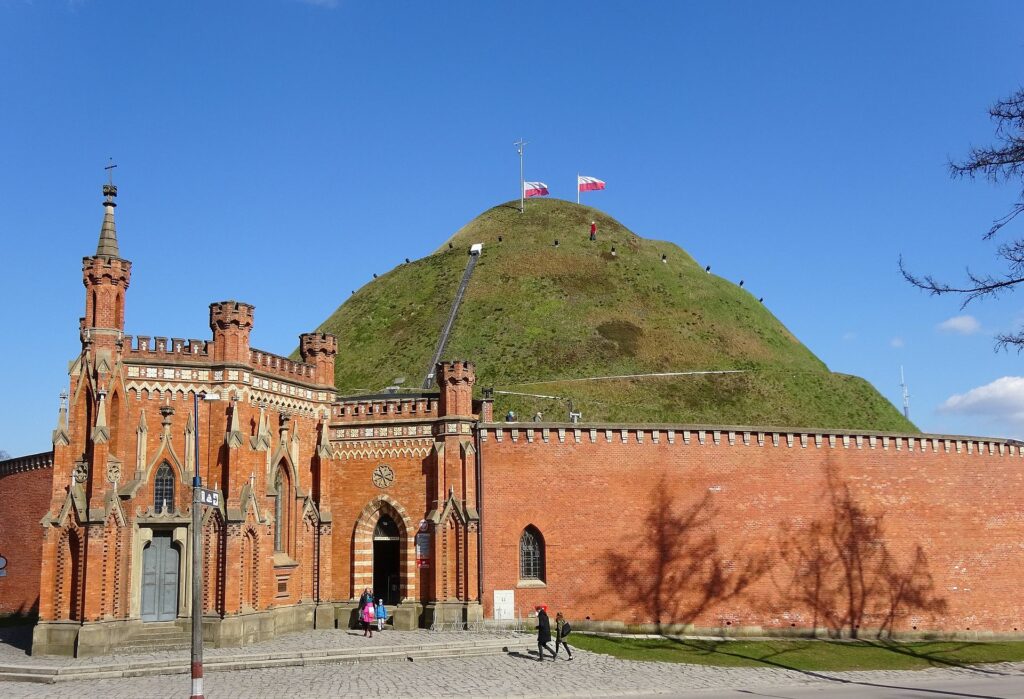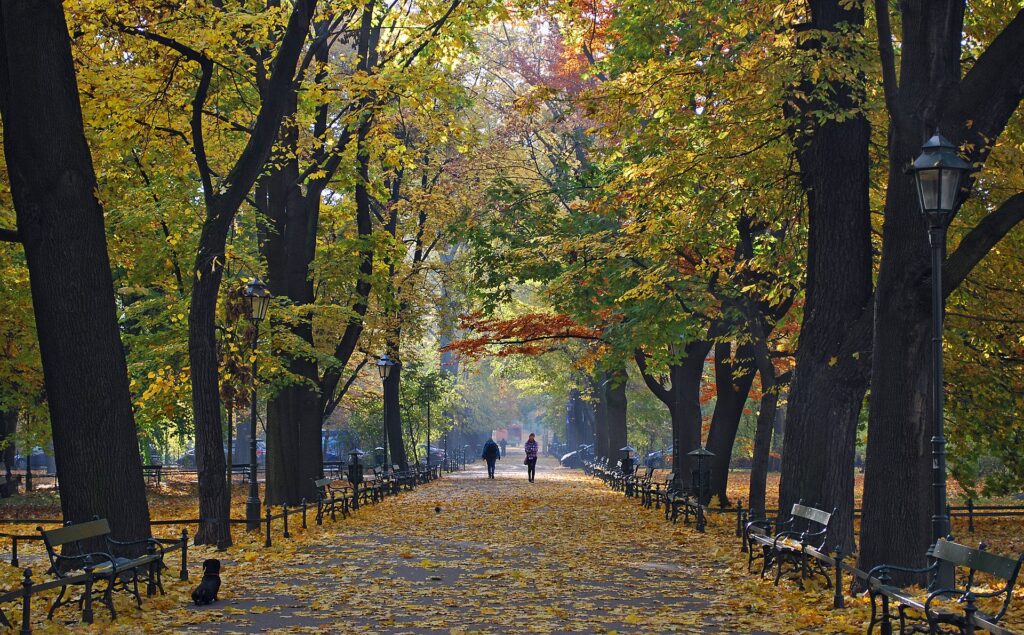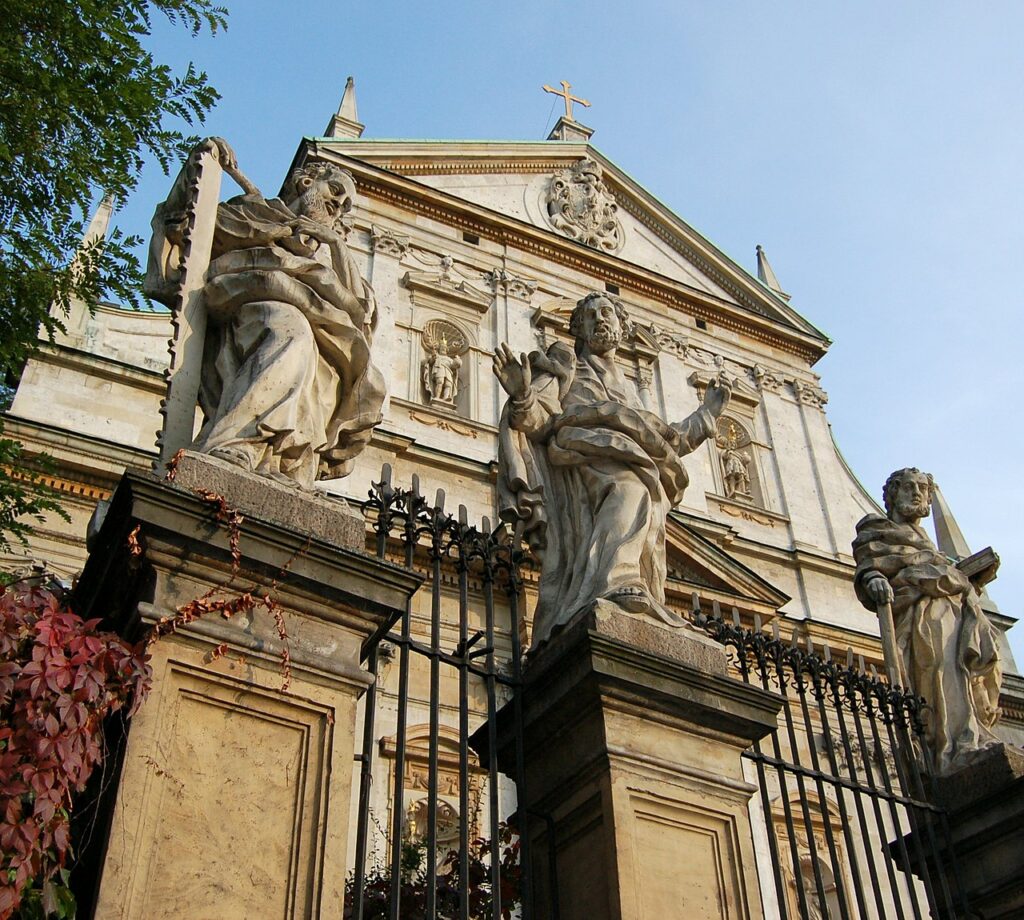Visit Cracow
Wawel Castle (Zamek Królewski na Wawelu) is located on Wawel Hill, which offers a fantastic view of the Vistula River and the city of Cracow. The site has been occupied since as far back as the Paleolithic Age, but the castle itself has its roots in the 11th century, making it one of the oldest structures in Poland. Wawel Castle is an excellent example of how architectural styles change over time, as the building has been influenced by different periods and tastes. The original structure was a pre-Romanesque building, which over the centuries was rebuilt and expanded in Romanesque, Gothic, Renaissance, and Baroque styles. Today, the castle complex includes not only the royal residence but also a cathedral, defensive walls, towers, and other buildings.
The castle served as the residence of Polish kings and queens until the capital was moved from Cracow to Warsaw in the late 16th century. It is a symbol of Polish national identity and a testament to the country’s history and heritage.
Within the castle walls, visitors can explore a number of different sections:
- The State Rooms: These rooms were where the king conducted the business of running the country. They are richly decorated with priceless art, beautiful wooden ceilings, and leather wall coverings.
- The Royal Private Apartments: This is where the royal family lived. These rooms offer insight into the personal lives of the Polish monarchy.
- The Crown Treasury and Armoury: This part of the castle is a museum holding a collection of royal regalia, jewels, and armaments. It offers a glimpse into the wealth and power of the Polish monarchy.
- The Lost Wawel Exhibition: This exhibit displays archaeological findings from the hill and information about the structures that were once part of the castle complex but no longer exist.
- The Dragon’s Den: This is a natural limestone cave located on the western slope of Wawel Hill, home to the mythical Wawel Dragon. A fun visit, especially for families with kids.
- Wawel Cathedral: Also known as The Royal Archcathedral Basilica of Saints Stanislaus and Wenceslaus, it is the Polish national sanctuary and was the coronation site of the Polish monarchs.
Every year, Wawel Castle attracts thousands of visitors from around the world. It is not just an architectural and artistic masterpiece, but also a tangible link to the fascinating past of Poland.
Official web site: https://wawel.krakow.pl/en
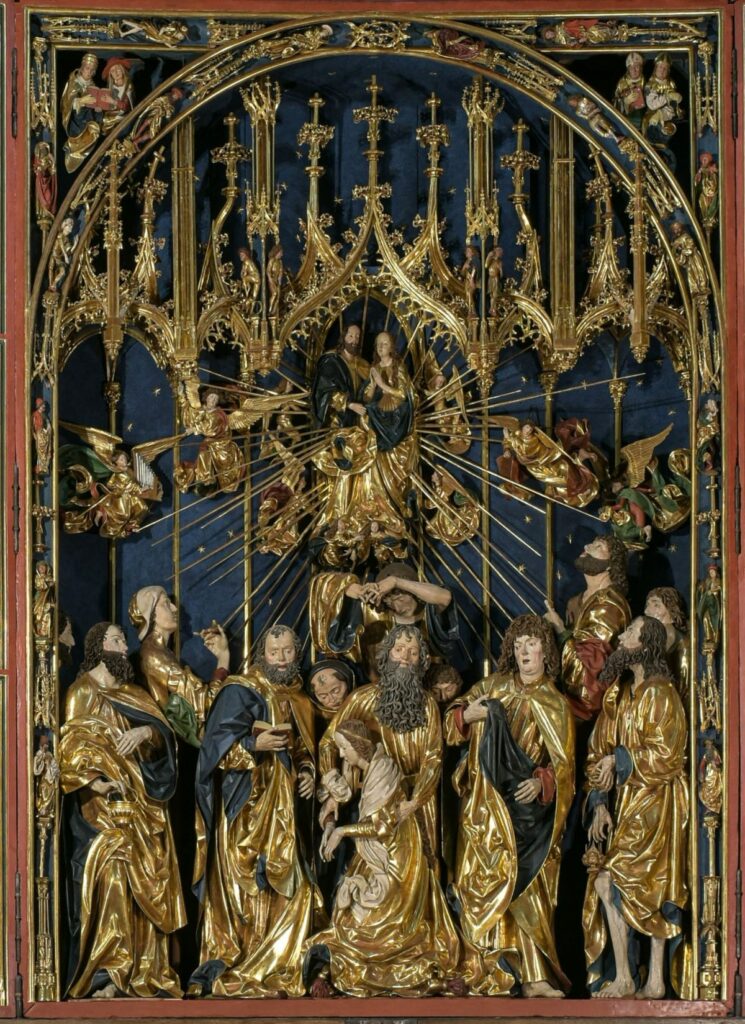
St. Mary’s Basilica (Kościół Mariacki), formally known as the Church of Our Lady Assumed into Heaven, is one of the most important and iconic landmarks in Cracow. Situated in the corner of the Main Market Square (Rynek Główny), its two unequal towers create a distinctive silhouette that is instantly recognizable in the city’s skyline.
The basilica was initially built in the 13th century in the Romanesque style, but a fire severely damaged it. The structure we see today was rebuilt in the 14th century in the Gothic architectural style.
Here are some of the key aspects and attractions of St. Mary’s Basilica:
- The Blue Starry Ceiling: The Basilica’s blue ceiling, adorned with golden stars, represents a starry sky and adds to the ethereal atmosphere of the interior. The contrast of the blue ceiling with the largely red interior decorations is striking.
- Stained Glass Windows: Dating back to the 14th century, the stained glass windows in the basilica add a beautiful, colorful light to the interior.
- The Two Towers: The two towers of the church are of unequal height and have different styles. The taller one, known as the Bugle Tower, is a watchtower for the city. The lower one, the Bell Tower, houses five bells, each with its own name.
- Church Organ: The basilica boasts an impressive organ. During the summer, visitors can enjoy organ concerts that showcase this magnificent instrument.
- Crypt and Underneath: Beneath the Basilica, you can explore the crypts and tombs where many significant figures in Cracow’s history are buried.
Visiting St. Mary’s Basilica is like stepping back in time. Its breathtaking interior, rich history, and the solemn trumpet call combine to create an unforgettable experience that showcases the spiritual and cultural heritage of Poland.
Main Market Square (Rynek Główny) in Krakow is one of the largest medieval town squares in Europe, and the center of the city’s social and cultural life. Measuring 200 meters on each side, the square is an impressive space filled with historic buildings, monuments, cafes, and shops.
Here are some key attractions and aspects of the Main Market Square:
Cloth Hall (Sukiennice): This Renaissance building in the center of the square was once a major center of international trade. Merchants from around the world used to sell their goods here. Today, it hosts a variety of stalls selling Polish handicrafts, amber jewelry, and souvenirs. Upstairs, you’ll find the 19th Century Polish Art Gallery, a branch of the National Museum.
St. Mary’s Basilica: Overlooking the square, this Gothic church with its distinctive uneven towers is one of the city’s main landmarks. Be sure to catch the hourly trumpet call from the taller tower.
Town Hall Tower (Wieża Ratuszowa): The only remaining part of the old Krakow Town Hall, this tower offers a panoramic view of the square. The basement hosts the Theatre Museum, dedicated to the history of theatrical arts in Krakow.
Adam Mickiewicz Monument: This monument honors one of Poland’s greatest poets, Adam Mickiewicz. It’s a popular meeting point and a landmark for concerts and public events.
Numerous Restaurants and Cafés: The square is surrounded by numerous restaurants, cafes, and pubs. These are great places to taste Polish cuisine or enjoy a cup of coffee while watching the hustle and bustle of the square.
Horse-drawn Carriages: For a romantic or simply fun experience, you can take a horse-drawn carriage ride around the square and the nearby streets of Old Town.
Street Performers and Events: The square is often the stage for various performances, from street musicians to cultural events and festivals.
Whether you’re visiting historic sites, shopping for souvenirs, enjoying local food and drink, or simply soaking up the atmosphere, the Main Market Square is the beating heart of Krakow.
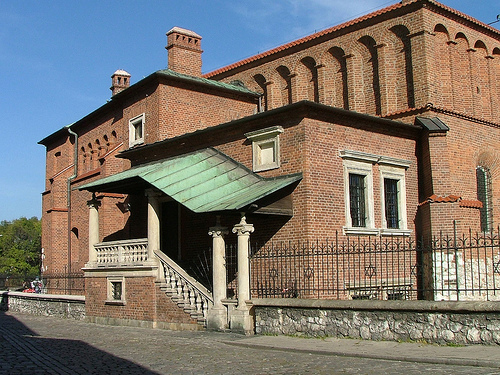
Jewish District (Kazimierz): Kazimierz, commonly known as the Jewish District, is a historic and culturally significant neighborhood located in Krakow, Poland. It has a rich history dating back to the 14th century when it was founded by King Casimir the Great. The district was once the thriving center of Jewish life and culture in Poland, known for its synagogues, Jewish businesses, and vibrant street life. Today, Kazimierz remains a symbol of Jewish heritage and resilience, attracting visitors from around the world to explore its cobblestone streets, visit synagogues like the famous Remuh Synagogue, and experience its unique blend of history and modernity. The annual Jewish Culture Festival held in Kazimierz further celebrates the district’s legacy and serves as a platform for promoting understanding and dialogue.
Oskar Schindler’s Factory: Oskar Schindler’s Factory, located in Krakow, Poland, is a poignant historical site renowned for its association with Oskar Schindler, a German industrialist who saved countless Jewish lives during the Holocaust. The factory, once a haven for Schindler’s Jewish workers, has been transformed into a museum that offers a moving and informative exhibition about the Holocaust, featuring preserved factory spaces, artifacts, and personal stories. This museum stands as a powerful tribute to Schindler’s heroic efforts and the resilience of those he saved, while also serving as a reminder of the importance of compassion and action in times of adversity. Its exhibits and displays provide a profound educational experience, encouraging visitors to reflect on the past and champion human rights and tolerance.
Wieliczka Salt Mine: situated near Krakow, Poland, is a remarkable historical and geological marvel. This UNESCO World Heritage site has been an active salt mine for over seven centuries and showcases an underground world of awe-inspiring chambers, sculptures, and chapels carved entirely out of salt rock. The mine’s intricate salt carvings, stunning underground lakes, and salt formations create a captivating journey into the depths of the Earth’s history.
Visitors to the Wieliczka Salt Mine can explore its labyrinthine tunnels, descending hundreds of meters underground to witness the unique blend of human craftsmanship and natural formations.
Rynek Underground: A high-tech underground museum that provides a fascinating glimpse into the daily life and trade of medieval Krakow, with displays of archaeological artifacts unearthed during the square’s excavations.
One of the highlights of this unique attraction is the interactive approach to history, allowing visitors to engage with the past through touchscreens and sensory experiences. From market stalls to workshops, the Underground Market recreates the atmosphere of a bygone era, showcasing the evolution of Krakow’s urban landscape.
Kościuszko Mound (Kopiec Kościuszki): is a prominent historical landmark nestled in Krakow, Poland. This striking earthen mound pays tribute to Tadeusz Kościuszko, a national hero and a symbol of Polish independence.
Ascending the mound offers a panoramic view of the city and its picturesque surroundings, providing a moment to reflect on Kościuszko’s legacy and the struggles he faced in his pursuit of liberty. Erected in the early 19th century, the mound serves as a powerful testament to the enduring spirit of the Polish people.
Its peaceful park setting invites visitors to stroll along its paths, embracing the serenity and natural beauty that contrast with the historical weight of its purpose.
Planty Park: in Krakow is a verdant oasis that encircles the historic Old Town, creating a serene and picturesque haven in the heart of the bustling city. This lush green belt, established in the 19th century, is a harmonious blend of nature and history, offering residents and visitors a place to unwind, connect with nature, and relish the city’s rich heritage.
As you meander along the curving paths of the Planty Park, you’ll find yourself surrounded by a diverse array of trees, flowers, and manicured lawns. The park’s design is a testament to urban planning that seamlessly integrates natural beauty with architectural splendor.
Royal Route (Droga Królewska):is a historic and iconic thoroughfare that winds through the heart of Krakow, Poland. This elegant route has witnessed centuries of regal processions, grand events, and the passage of time, making it a living testament to the city’s royal heritage.
Beginning at the imposing St. Florian’s Gate, the Royal Route leads travelers on a majestic journey through Krakow’s rich history. As you stroll along the cobblestone path, you’ll be captivated by the grandeur of centuries-old architecture, charming townhouses, and ornate palaces that line the way.
As you follow the path of monarchs, dignitaries, and common folk who have traversed this route over the centuries, you’ll gain a deeper appreciation for Krakow’s enduring allure and its profound connection to its royal heritage.
Cracow is a city rich in history, culture, and art, so there’s always more to discover!
